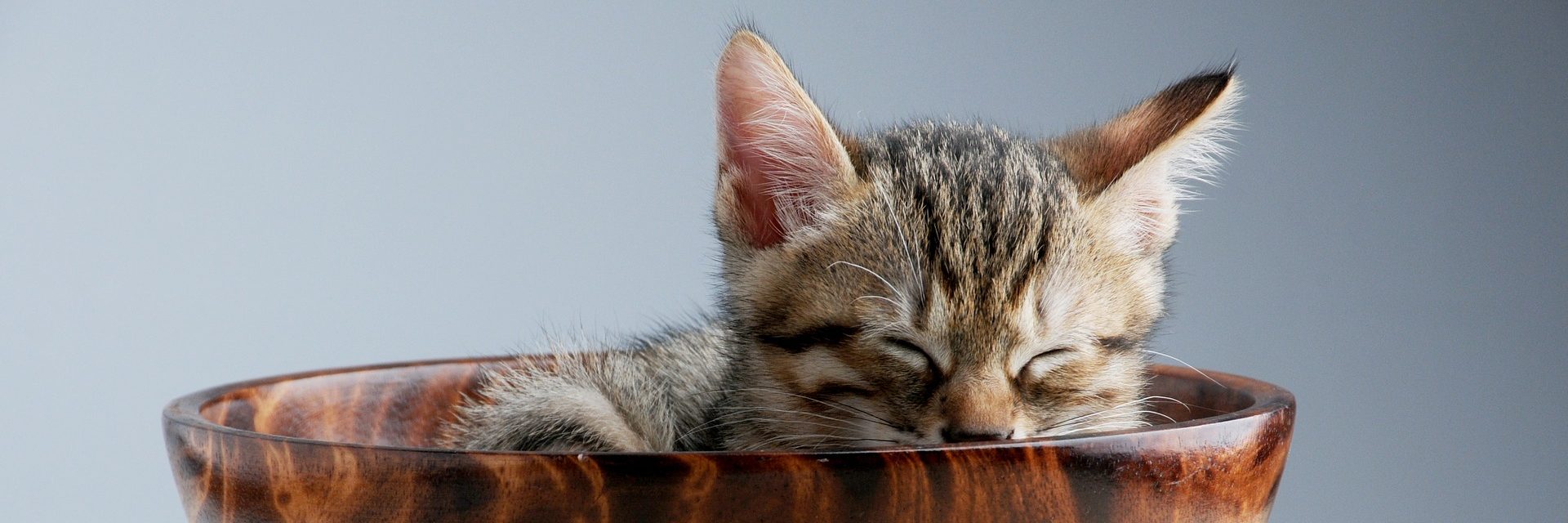Congratulations on adopting a new kitten or cat! Cats are amazing little balls of fluff that provide joy and companionship to their human family members. This article covers how to set up your house for your new feline friend.
First and foremost, when adopting kittens, consider getting 2 kittens. Kittens are super busy and do well having a playmate for all of their balled up energy. Kittens also help socialize each other. If one kitten hasn’t learned yet not to bite, for example, the other kitten will often help teach them better manners.
Note: As a veterinarian, I have used above technique for “bottle babies” in the clinic. Bottle babies are kittens that grow up on the bottle and raised by humans. They often start out undersocialized, but placing them with other kittens or cats can help them adjust.
After you have decided how many cats or kittens to adopt, you will need to set up a room for your new cat or kitten. Cats are territorial and are often stressed out by new environments. I recommend setting up one room to start, letting them feel comfortable in that space before allowing them in the rest of your home.
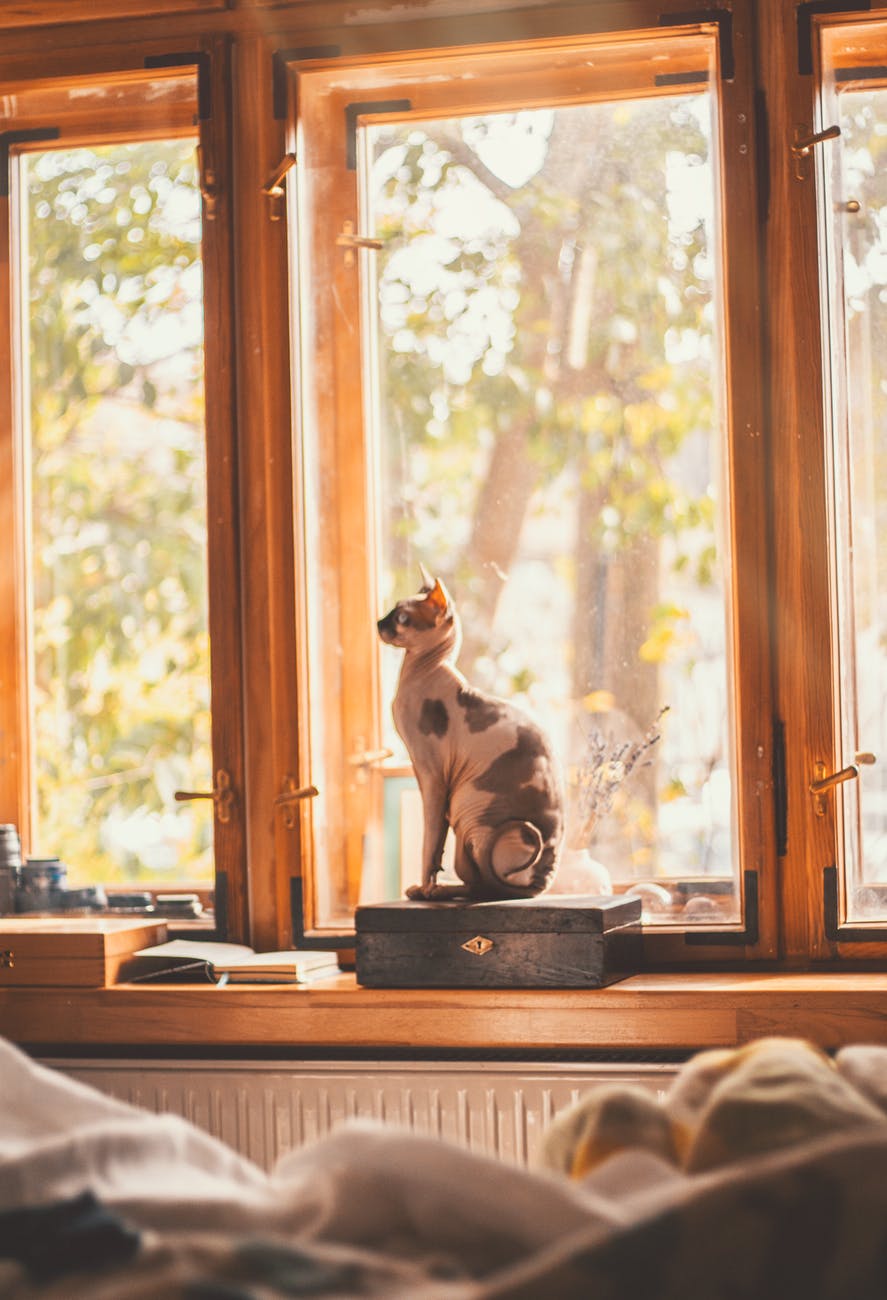
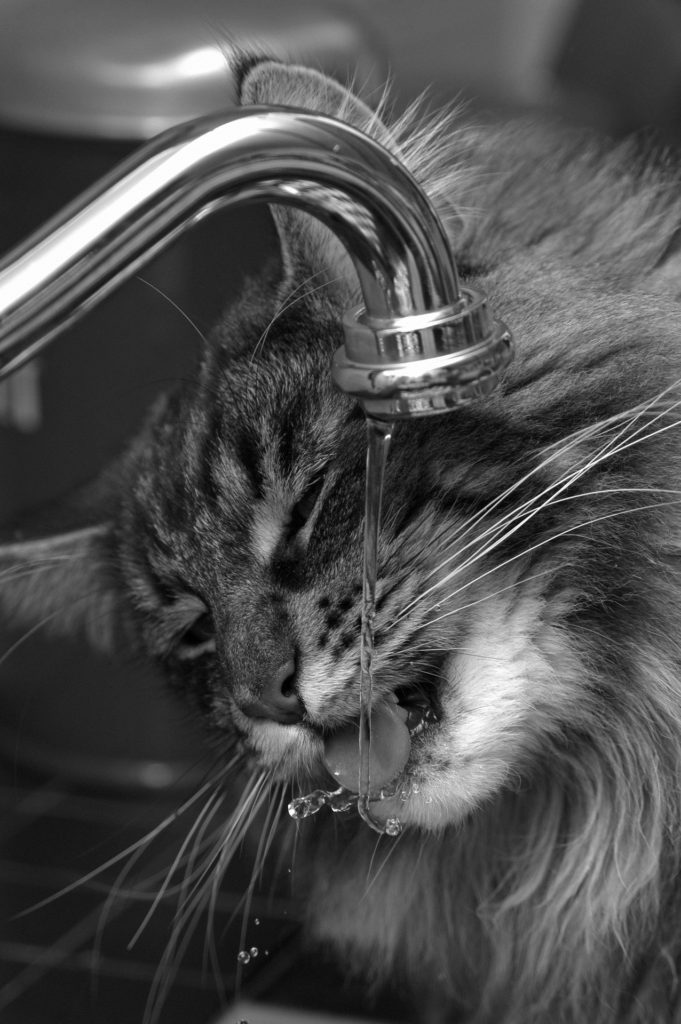
List of must haves:
Water bowl: Cats will need a clean water bowl with fresh water daily. You can also consider a water fountain. Cats are terrible at keeping hydrated and many cats really only like fresh water like what you would get from a stream. Evolutionarily, it makes sense to like fresh water because stagnant water is more likely to have disease. Water fountains are a nice modern alternative to outdoor streams.
Note: I have had trouble with older cats who can be afraid of the moving water and the sound of the pump. Kittens are more adaptable to new things, so this is a good time to introduce the water fountain.
Litter boxes: How many boxes do you need? The rule of thumb is number of cats plus 1. So if you have one cat, you will need 2 boxes. If you have 3 cats, you will need 4 boxes.
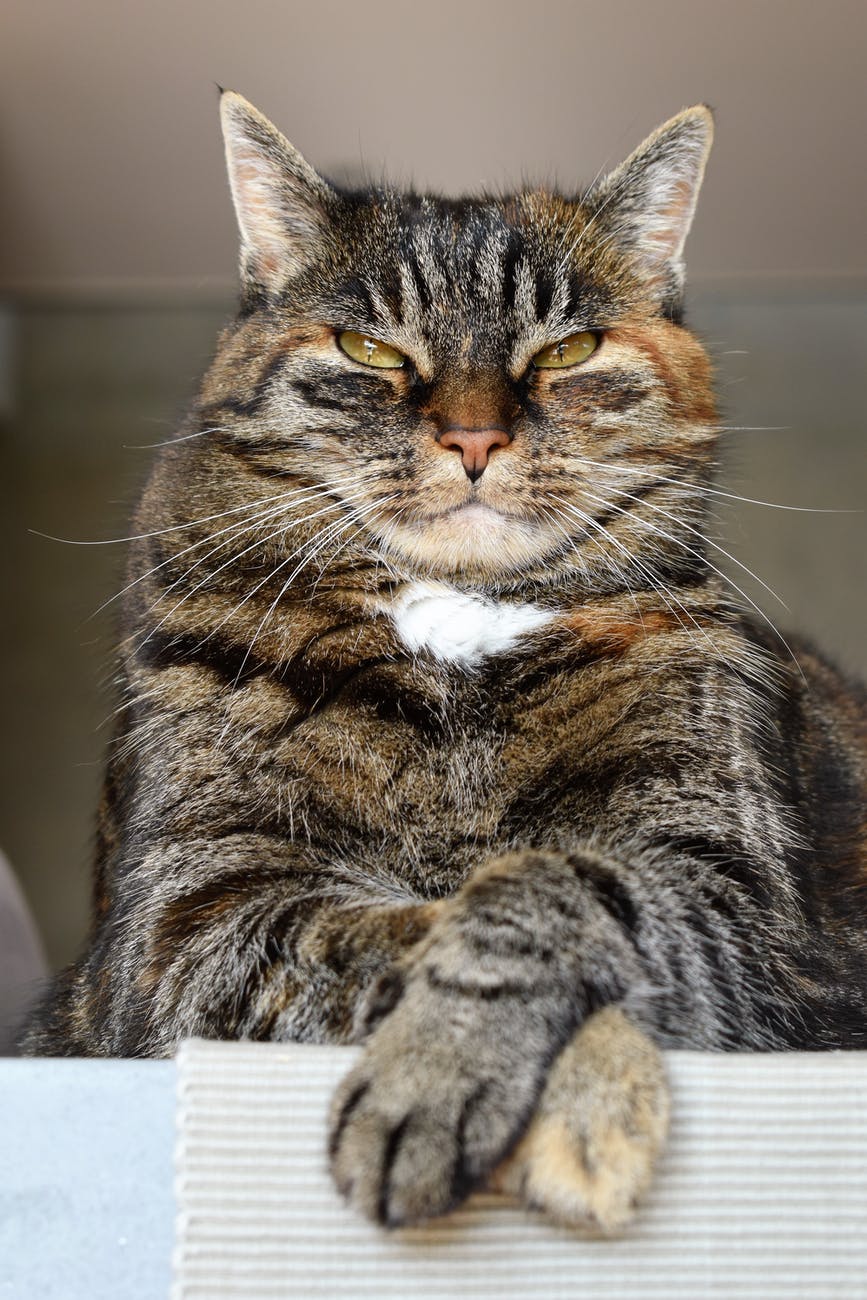
Keep the litterbox clean and tidy: Litter boxes are probably the most important item to keep clean to reduce your cat’s stress level. If the litter boxes are too small, dirty, or not private enough (like in a hallway) this will stress your cat out and they may not use the box.
Multi-Pet households: Part of privacy is also making sure that one animal isn’t stalking another animal while they are on the toilet! Yikes! That would be so uncomfortable!
Important: Not using the box can even endanger the cat’s life since cats can sometimes lose their happy homes due to peeing or pooping outside the box. Because this is so important, set your cat up for success with enough clean boxes that are in a safe and quiet location.
What type of litter should I buy? Perfume and dust free is best. Ideally change out the litter entirely one time per week.
Pro tip: If you have a smaller home, you can have fewer boxes if you scoop them more than once per day or use automatic boxes.
Food: Introduce your kitten to both wet and dry food. Some kittens and cats only like one type! In addition, it is important to offer kittens several types of food including fish and chicken. This will help make them more adaptable to different foods later on in life.

Veterinary note: As you can imagine, cats can be hard to give medicines. Veterinarians frequently use medicated foods to try and help cats feel better. It’s really hard when we have medicated food, but the cat just won’t eat it!
How long should I feed kitten food? Kittens should be given kitten food for about 1 year, switching to spayed and neutered food, if available, after being spayed or neutered. Large breed cats such as Maine Coons can have kitten food for up to 18 months.
Quiet spaces: Do you ever have the feeling that sometimes you just need to be able to close the door and get some space for yourself to unwind and rejuvenate? Well, your cat is much the same. Make sure you have hiding spots set up so that your cat can get away from it all. Cardboard boxes make excellent hiding spots.
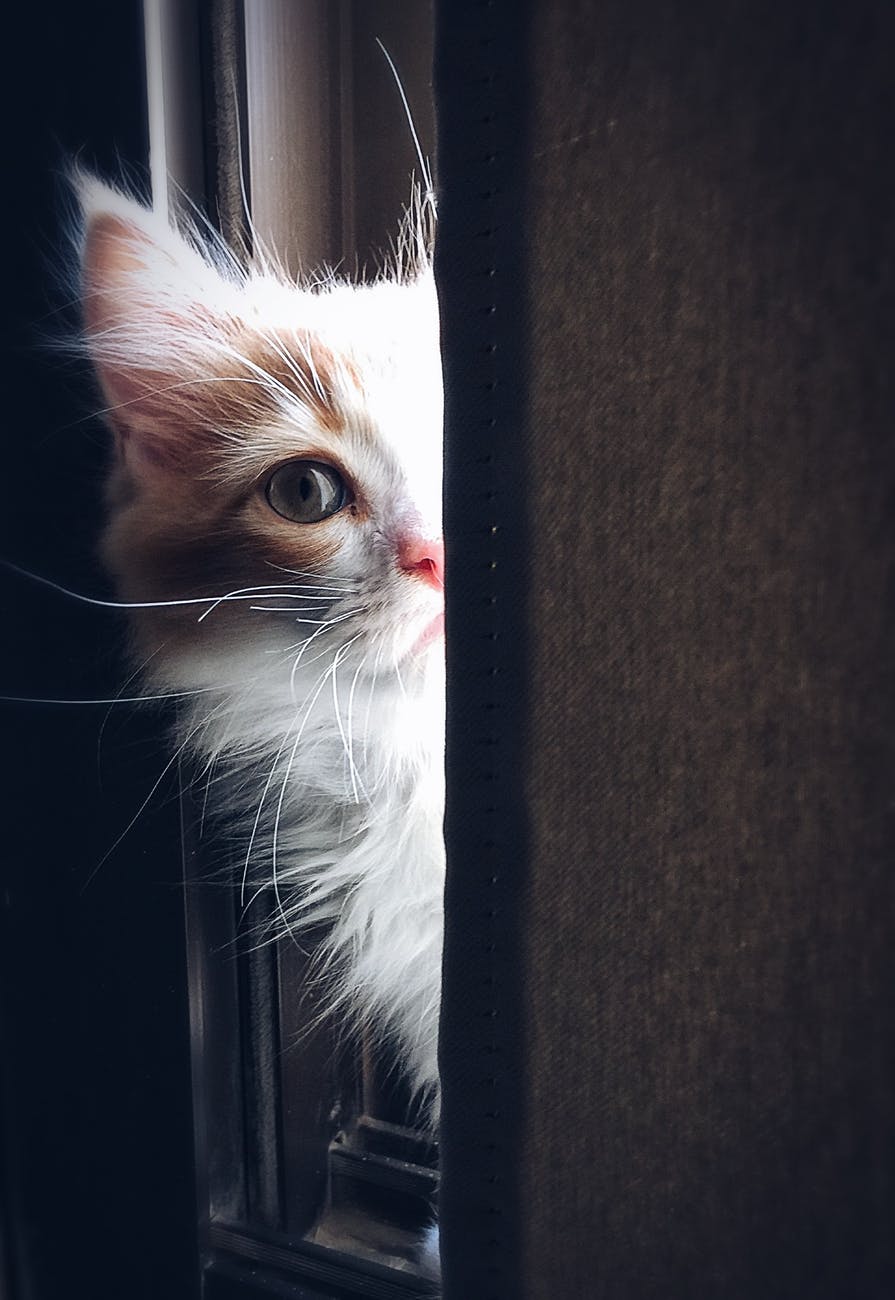
Two cats: Make sure there isn’t just one bed or one box for two cats. They need options!
Cat spaces: Cats love boxes, packaging paper, cat trees, vertical spaces. Some cats prefer to hide on the ground while others prefer to get up high. Make sure you have both for your cat to choose from.
Cozy spots: Don’t forget to set up sunny spaces for your cats. I fold blankets or towels on the windowsill.
Shy cats: Hiding places are especially important for shy cats so that they can start feeling comfortable in their new home.
Scratching spots: Scratching is important for sharpening their claws, to express excitement, and to mark their territory.
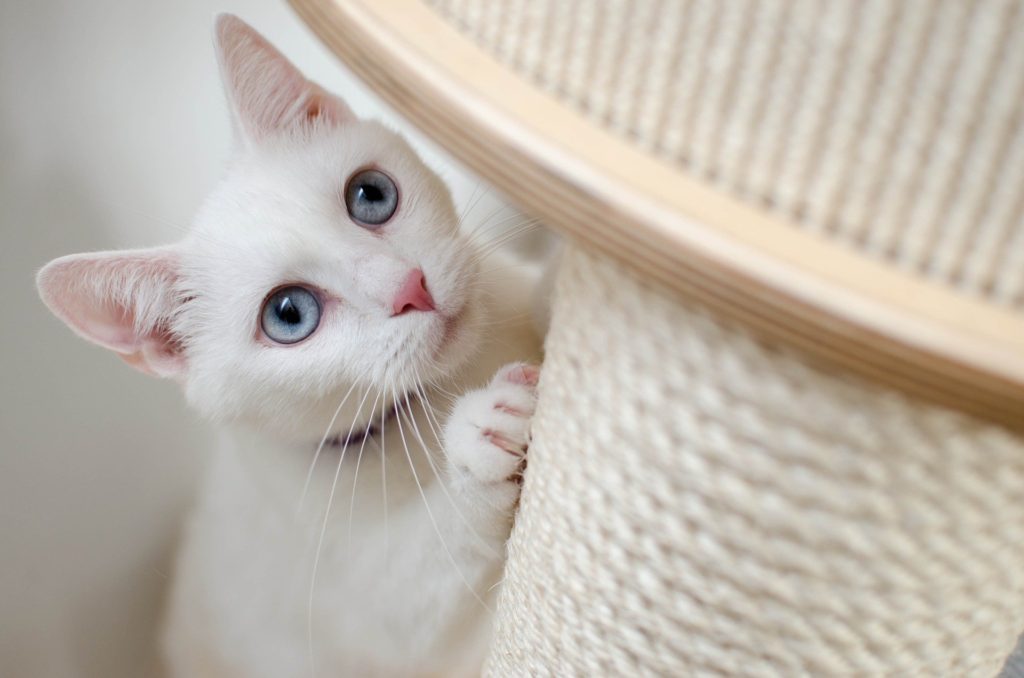
Note: Nothing will completely prevent your cat from scratching the furniture. If your furniture is expensive, then consider adopting an already declawed adult cat from a rescue or maybe adopting a different type of animal. I do not recommend having your cat declawed. For me, furniture just isn’t as important as your cat keeping all it’s fingers and toes.
That being said, scratching posts can minimize the amount of scratching your cat does do to the furniture. Placing the post near the sofa, for example, will make the sofa less desirable. Scratching posts can be bought or hand made. I have even bought used furniture for the cats to use. They really like those scratchy office chairs that you can sink your claws into.
When making my own scratching posts, I have used artificial grass, carpets, and thick bound ropes. Just make sure that you aren’t using toxic materials and that strings can’t come off for your cats to eat.
Lastly, when buying or making scratching posts, make sure that you have vertical and horizontal options available for your cat.
Toys!
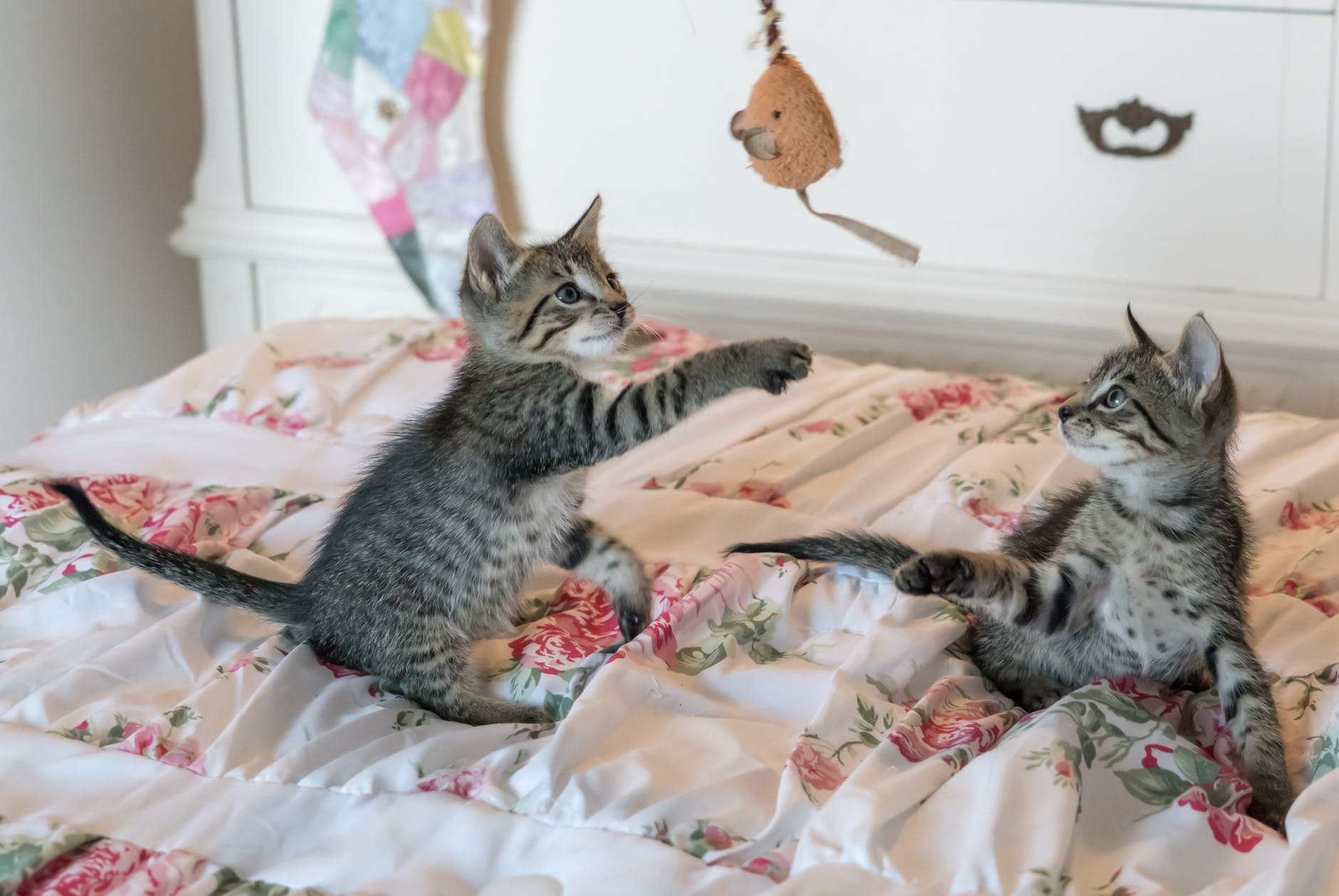
Kittens need a lot of toys. In addition to what you can buy, don’t forget about packaging paper, paper boxes and paper bags. Make sure that you don’t allow your cat to play with strings or plastic bags. Some kittens will actually swallow pieces of plastic or string!
My rule is: if it’s not digestible, then the cats shouldn’t be eating it.
You are all set! Set this room up for your cats and then let your cats out into the rest of your house when they are ready to explore. This is usually after a few days. Start with short exploring times per day to get them used to the new space slowly. Cats love routine and having their own territory with their smell, so don’t be surprised when they retreat to this room you have set up for them as a safe space. You cat will become quite comfortable after a few weeks. Cats are amazing!
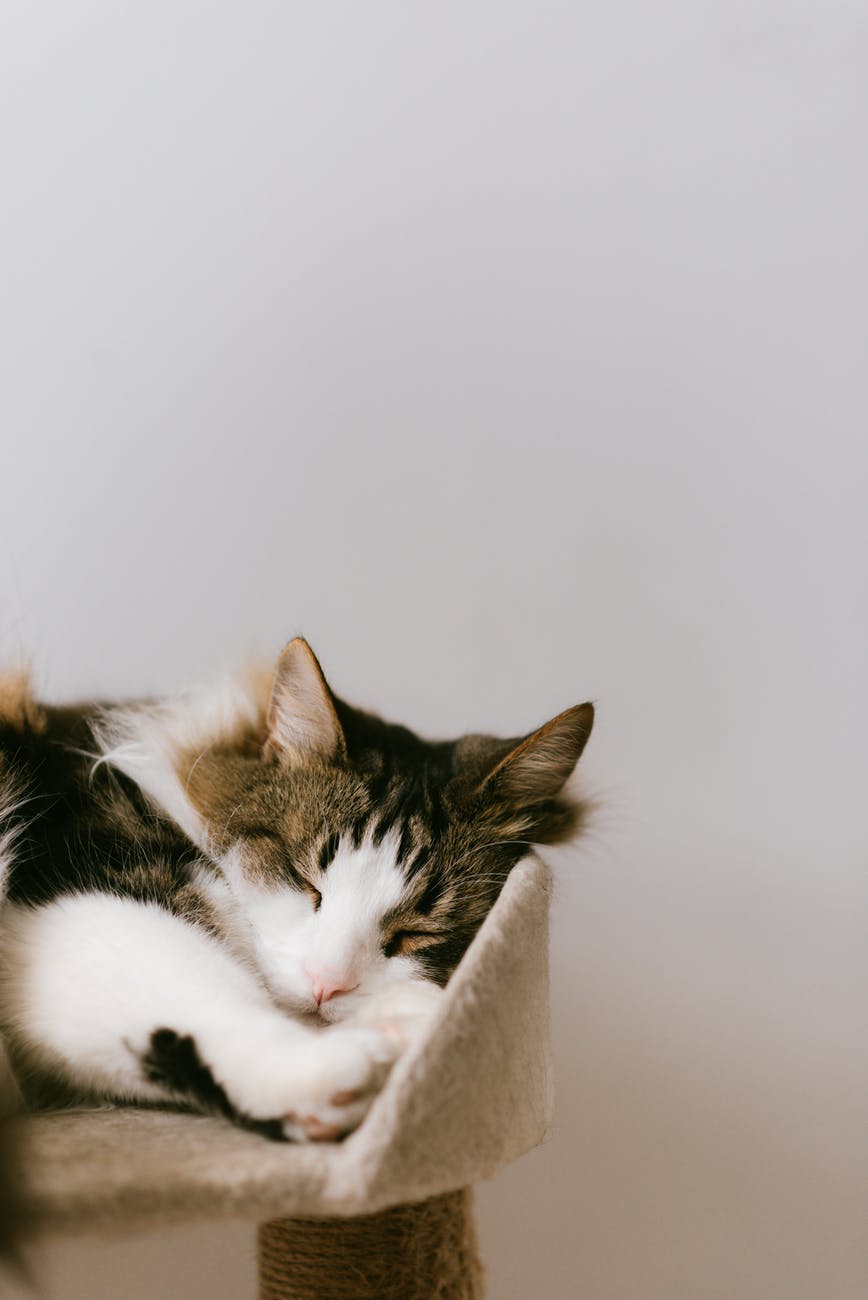
Have fun and enjoy!

